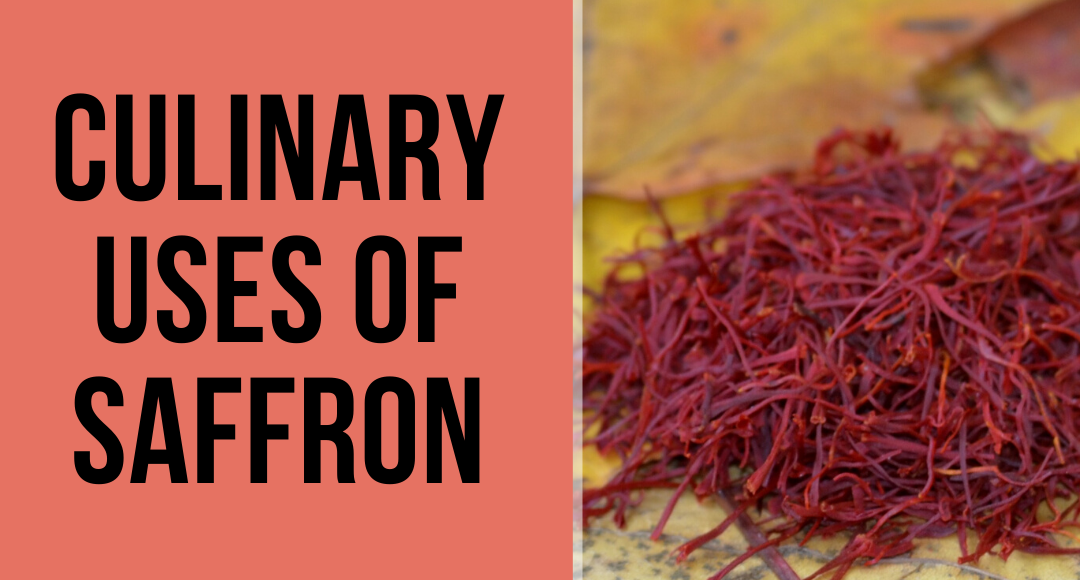
Saffron in the Kitchen
Saffron has been used in Vedic sciences and natural medicine for thousands of years. It contains a range of antioxidants like crocetin, safranal, and crocin. Crocin and Crocetin contain brain stimulating properties that protect the health of brain cells. Studies show that saffron contains the electrolytes potassium and sodium, and is rich in other minerals like calcium, magnesium, selenium, manganese, iron, and zinc. So it is preventive as well as curative.
Due to the extensive farming and processing procedures, it was only accessible to the elite noblemen of various cultures in the world. The Romans bathed in saffron water. Cleopatra used it as a facial mask. All through medieval times, saffron had great importance in Europe, especially in the form of dye, with saffron-colored clothes becoming the grab of nobility and royalty.
Saffron became an important part of different religions , their rituals and holy offerings. The color, aroma and components of saffron were used to scent and purify temples. It was first cultivated in Central Asia and has been mentioned in sacred texts of holy books.
The Red Gold, saffron, is one of the most ancient spices used in India and considered to be a valuable commodity for thousands of years. In fact, many European countries have saffron recipes in their cookbooks!
Do you wish to learn how to add saffron to your cuisine?
Well, let’s talk about the culinary uses of saffron

Saffron is popular over regions of the world as one of the rarest spices, yet its presence is across cultures. It features in North African, European and Asian cuisines. It imparts a luminous yellow-orange hue which is used worldwide in everything from cheeses, liquors, and confectioneries.
Countries like Spain and Portugal make authentic use of saffron, and you will definitely find golden color in their fish and seafood broths. The national dish of Spain “Paella” gets a signature golden color from saffron. It is important in making “bouillabaisse”, which is a spicy fish stew from Marseilles, and Italian “risotto alla Milanese”. And the saffron bun has Swedish and Cornish variants. They are eaten especially on Saint Lucy’s Day. In England, the saffron infused “Revel bun” was baked for anniversary rituals or church dedications.
Across India, saffron is used for various purposes in each state. Kehva is an aromatic dish from Kashmir, made with saffron, almonds, and other dry fruits. Saffron is also used in Kashmiri marriage feasts; Wazam, where chicken is cooked in aromatic saffron solution.
Saffron is used to color and flavor savory dishes like pulao and biryanis and sweet dishes like kheer, halwa, etc. Although an expensive spice, just a stigma or two is enough to lend its aromatic essence to a bowl of food.
Saffron is famous for Moghul cuisines in India. Lamb is marinated in saffron for three days to cook Shahi Raan, a regal roast leg of Lamb with Saffron Raisin Sauce! The use of saffron is maximized by the delightful Kesari bhath – a semolina dessert from Karanataka.
In Morocco, saffron is used in Tajine dishes, and Iraq, it has its version of rice called timman z’affaran. Saffron pairs well with these spices: Cardamom, Cinnamon, Cloves, Coriander, Cumin, Almonds.
Middle Easterners use saffron to flavor coffees and tea. Here’s a recipe for you. Try it once!!
Saffron has war history too.. The German immigrants who settled in eastern Pennsylvania used saffron to color and flavor their potpie, which is a chicken stew buried under large square noodles. The settlers brought saffron and crocus with them from Germany and grew the spice in their backyards.
Prepare Saffron for Cooking:
- If your recipe includes a liquid ingredient, use a spoonfull of it and dip saffron strands in it (i.e Water, broth, or wine).
- Substitute turmeric for the color properties, but not for the flavor.
- Do not use wooden bowls or spoons when blending saffron. Wooden bowls tend to easily absorb saffron and no one wishes to waste it!
Note that you would need three tablespoons of water or another liquid to dissolve one teaspoon of saffron. You will also be required to allow it to soak for a minimum of two hours and a maximum of twelve hours. But make sure, you do not allow it to soak overnight or it will tend to lose its flavor. Although, the color will be very impressive!
If you prefer powdered saffron for cooking, choose to buy saffron strands and make the powder at home. Its not difficult. Gently roast threads of the spice over a low flame in a frying pan and then blend it into a coarse powder. This will preserve the natural flavor but make it easier to add to certain dishes.
The reason it is advised not to buy powdered saffron from the market is there have been recent reports of high adulteration to increase the weight. Instead, buy from a trusted source like Puri Brothers and ensure you get what your order!!
Saffron is sensitive to light and moisture. Saffron also works beyond the palate; since it has nutritive properties beneficial to health as well. Therefore, it is advisable to store it in a cool and dark place to maximize the shelf life and potency.
Where can you find saffron?

Puri Brothers has a 70+ years of legacy and grip over the understanding and dealing with precious and natural products, including saffron. We cater to our customers’ budgets and customize
orders as per need. We come with the assurance of providing pure, laboratory tested products,
ensuring long term association because of consumer satisfaction and product quality.
For more information, reach out to us at +91 8146967058 or wecare@puribrosglobal.com.

Leave a Comment